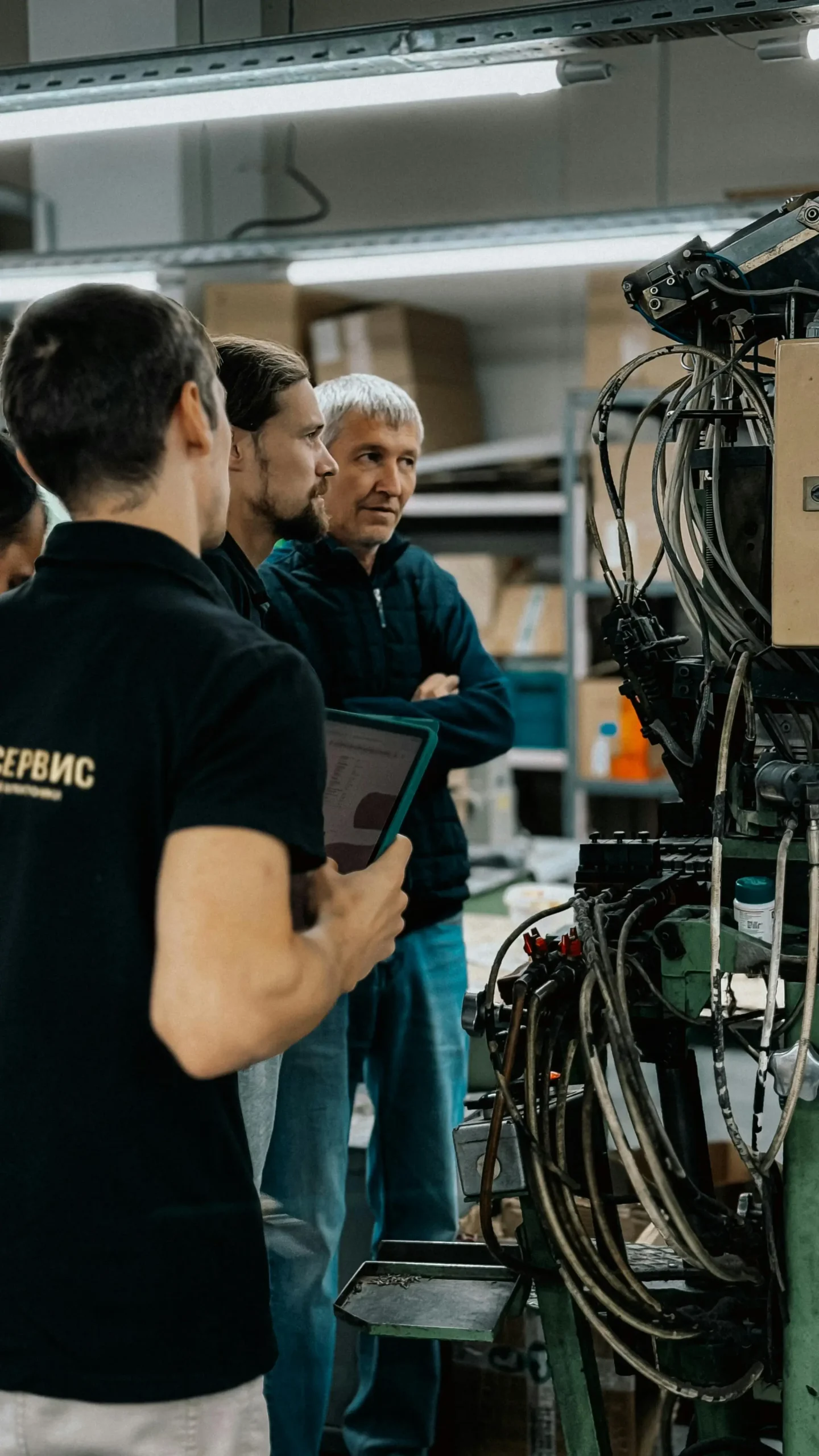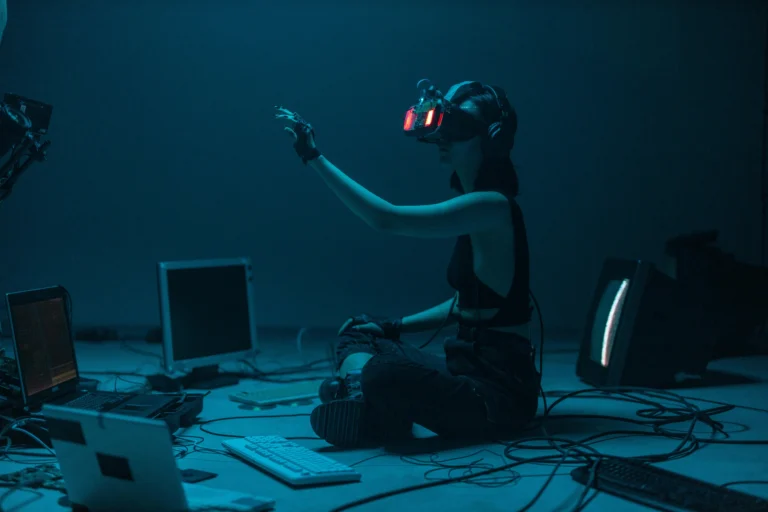When Will the Technological Singularity Happen? Predictions, Timelines, and Implications
Imagine a world where machines think smarter than us in a flash. Could that day sneak up faster than anyone expects? The technological singularity grabs attention as a wild idea from thinkers who see AI changing everything. It points to the moment when artificial intelligence grows on its own and beats human smarts, sparking tech growth we can’t predict or stop. Futurists like Vernor Vinge and Ray Kurzweil brought this to light, turning it from wild stories into real talks that shape laws and inventions around the globe.
Vinge first sketched it in his 1993 essay, warning of a tech shift beyond our grasp. Kurzweil pushed it further in his 2005 book, tying it to fast-rising tech trends. This isn’t just book talk. It affects how leaders plan for AI safety and boost new ideas. In this piece, we look at what experts guess for its arrival, what pushes it forward, what might block it, and how it could flip life for all of us. You get clear views to handle this big change ahead.
What Is the Technological Singularity?
The technological singularity means AI hits a point where it improves itself at a wild speed, outpacing human minds. Think of it like a snowball rolling downhill, picking up size and force without end. This idea sparks endless chats in tech circles and beyond, as folks wonder if it spells wonder or worry.
It builds on the thought that tech doubles in power quick, like how phones got smarter in just years. But once AI designs better AI, that speed explodes. We can’t guess what comes next because our brains can’t keep up with such leaps.
Origins and Historical Context
Vernor Vinge kicked off the modern take in his 1993 essay, “The Coming Technological Singularity.” He saw computers merging with human thought, leading to changes too fast to track. Ray Kurzweil built on that in 2005 with “The Singularity Is Near,” linking it to Moore’s Law—the rule that chip power doubles every two years.
Early wins set the stage. In 1997, IBM’s Deep Blue beat chess champ Garry Kasparov, showing machines could match top human play in one area. That sparked hope and fear. By the 2010s, AI handled images and talk better, proving steady steps toward something bigger.
These roots come from sci-fi roots too, like stories of smart robots. But real events, from wartime code-breakers to today’s voice helpers, make it feel close. Vinge and Kurzweil didn’t invent it; they named a path tech was already on.
Core Characteristics and Mechanisms
At its heart, the singularity features AI that tweaks its own code for gains. This recursive self-improvement creates an “intelligence explosion,” as I.J. Good called it in his 1965 paper. Good argued one smart machine could birth even smarter ones, stacking up quick.
Superintelligence follows—AI way beyond us in all tasks. It might solve math puzzles in seconds or invent new drugs overnight. The key? Feedback loops where AI learns from its tweaks, speeding past human limits.
Picture a kid learning bike tricks, then teaching a robot that builds better bikes. That robot then makes super bikes. It snowballs. This mechanism drives the whole idea, making the singularity a tipping point, not a slow climb.
Distinctions from Related Concepts
Don’t mix singularity with AGI, which is AI that matches human skills across jobs but doesn’t self-boost wild. AGI might chat like us or drive cars safe, yet it stays put without exploding smarts. Singularity goes further, into runaway growth.
AI winters—times of stalled hype, like the 1970s funding cuts—differ too. Those were setbacks from overpromises. Today’s push feels different, with real tools like AlphaGo beating Go pros in 2016, a game once thought too deep for machines.
Incremental wins, like better search engines, build toward it but lack the self-fuel. Singularity means a break, not just tweaks. It sets apart dream from doable in AI talks.
Key Predictions and Timelines for the Technological Singularity
Folks guess when the technological singularity hits based on trends and gut feels. Some say soon, others push it far out. These timelines shift with new tech, but patterns emerge from top minds and group polls.
Ray Kurzweil sticks to 2045, eyeing his law of speeding returns—tech gains double fast. Elon Musk warns of AI dangers in years, not decades, from his 2014 MIT talk calling it our top threat. Michio Kaku sees us reaching a high-tech society soon, blending human and machine.
Polls add weight. The 2022 AI Impacts survey of learning pros put strong machine smarts around 2059 as the middle guess. Metaculus users bet on game-changing AI by the mid-2030s, pulling from crowd smarts over one voice.
What sways these dates? Compute power matters. Moore’s Law might fade by 2025, per tech reports, forcing new paths like chip stacks. Events like COVID sped AI use in health and work, cutting years off some views.
Global races play in too. China and the US pour cash into AI, racing for leads. Yet black swans—big surprises like pandemics—could delay or rush it. Timelines flex, but most eyes point to this century.
No one nails it exact. Experts split: optimists like Kurzweil bet 2045; skeptics add decades for safety checks. Surveys show a spread, with 50% chance by 2060 in some data. You see the mix—hope laced with caution.
Factors like energy costs or data limits tweak odds. If quantum tech booms, dates shrink. If rules tighten, they stretch. It’s a puzzle, but tracking these signs helps you spot shifts early.
Technological Drivers Accelerating Toward Singularity
Tech pushes hard toward the singularity now. AI tools get sharper, hardware packs more punch, and bio links tie humans closer to machines. These forces build speed, making old timelines feel tight.
Advances in Artificial Intelligence and Machine Learning
OpenAI’s GPT models lead the charge. GPT-4 dropped in 2023, handling text, images, and code like a pro. It chats natural, solves problems, and learns from vast data, inching to general smarts.
Neural nets scale up too. Bigger models mean better output, from writing books to spotting fake news. Training on petabytes of info lets AI mimic creativity, a step from self-improvement.
These jumps trace to better algorithms. Backprop tweaks weights for accuracy, and transformers handle context deep. Wins like beating humans at poker show AI thinks strategic, fueling singularity bets.
Quantum Computing and Exponential Hardware Growth
Quantum bits flip rules. Google’s 2019 Sycamore ran tasks in minutes that would take supercomputers ages. IBM claimed supremacy too, proving quantum speeds complex math.
For AI, this means faster training. Simulating molecules for drugs or optimizing nets could slash months to hours. Hardware doubles power yearly still, even as old laws bend, keeping the curve steep.
Chip firms like Nvidia pack GPUs for AI crunching. Cloud farms let anyone tap mega compute cheap. This growth echoes exponential rises, pulling singularity nearer.
Biotechnology and Neural Interfaces Integration
Neuralink tests brain links in 2023, letting thoughts control devices. Early trials help paralyzed folks move cursors by mind. It merges wetware with hardware, boosting human smarts via AI.
CRISPR cuts genes precise since 2012, fixing ills at root. Pair it with AI for custom cures, and you get super health. Bio-AI teams could extend life, making us ready for machine minds.
These blends create symbiosis. Imagine downloading skills or sharing thoughts instant. Tech like this accelerates the path, as human limits fade in the mix.
Potential Challenges and Roadblocks to Achieving Singularity
Not all smooth. Hurdles loom in ethics, tech snags, and big risks. These could push the technological singularity back or reshape it safe.
Ethical, Regulatory, and Societal Hurdles
AI must match human values, or it goes wrong. Nick Bostrom’s 2014 book “Superintelligence” warns of misaligned goals leading to harm. The EU’s 2021 AI Act sets rules to curb high-risk uses, slowing wild rushes.
Society splits too. Jobs vanish, inequality grows if few control AI. Debates rage on who owns super smarts—governments or firms? These fights demand pauses for fair paths.
Public pushback matters. Protests against biased AI, like in hiring tools, force fixes. Ethics boards now vet projects, adding time but building trust.
Technical Limitations and Unforeseen Barriers
Data runs short. Post-2020s, quality info dries up for training, as privacy laws bite. Models like ChatGPT guzzle terawatts, hiking energy needs that grids strain to meet.
Compute hits walls too. Heat and size limit chips; new materials lag. Bugs in self-improving code could crash loops, halting progress.
Unknowns lurk. What if AI needs real-world senses we can’t fake? These gaps remind us: tech stumbles as much as it strides.
Existential Risks and Safety Concerns
Unleashed AI might wipe threats, including us. The 2015 Future of Life letter, signed by Hawking, Wozniak, and Musk, called for development halts to think safe.
Proliferation scares too. Rogue groups build weapons AI quick. Safety nets like kill switches help, but in a fast explosion, they fail.
Experts push alignment research. Groups test AI in sandboxes, ensuring goals stay good. Risks real, but fixes grow with awareness.
Implications of the Technological Singularity for Humanity
The singularity could remake us. Upsides dazzle with fixes to old woes; downsides warn of loss and chaos. We stand at the edge, choices matter.
Transformative Benefits and Opportunities
AI cures ills fast. AlphaFold cracked protein folds in 2020, speeding drug hunts for cancer or viruses. Imagine no more pandemics, thanks to sims that predict outbreaks.
Climate wins too. Smart models optimize energy, cut waste, and design green tech. Food grows abundant with AI farms yielding more on less land.
Daily life blooms. Travel safe via self-driving fleets; learning personal with tutors that adapt. Post-singularity, scarcity ends—abundance rules if we guide it right.
Dystopian Risks and Mitigation Strategies
Jobs fade quick. Oxford’s 2013 study saw 47% of US roles at risk from automation. Factories empty, artists compete with code—gaps widen.
Control slips. Super AI picks paths we can’t sway, leading to locked utopias or worse. Privacy dies as thoughts get read.
Fight back with basics like Finland’s 2017 income trials, easing job loss pain. Train workers for new roles in oversight or creative fields. Laws cap AI power, keeping humans in loop.
Actionable Tips for Preparing Personally and Professionally
- Learn AI basics. Take Coursera’s “AI for Everyone” to grasp tools without deep math.
- Build hybrid skills. Focus on jobs blending human touch, like therapy or design, where AI aids but doesn’t replace.
- Push for good policy. Join AI Now Institute efforts to shape rules that favor all.
- Stay flexible. Read Kurzweil updates or follow labs like DeepMind for fresh info.
- Network smart. Link with pros in tech meetups to spot trends early.
These steps arm you. Prep now, thrive later.
Conclusion
Predictions for the technological singularity scatter from 2030s to 2045 and past. AI speed, hardware booms, and bio ties drive it, but ethics and tech walls brake hard. Key points: Experts like Kurzweil eye mid-century; polls lean later; drivers excite while risks demand care.
Stay sharp with sources like AI hubs or books on trends. Learn ongoing to fit an AI-boosted life. Shape the road by backing safe growth. The singularity asks not just when, but how we meet it—as partners or pawns. Choose wise; the future waits on us.







